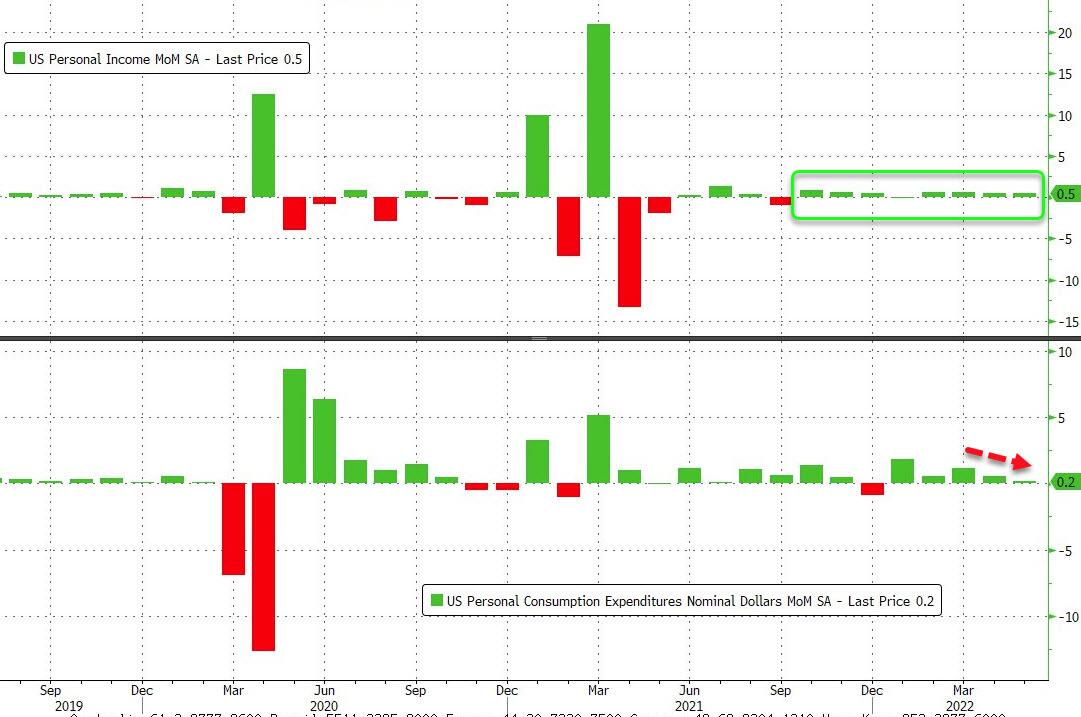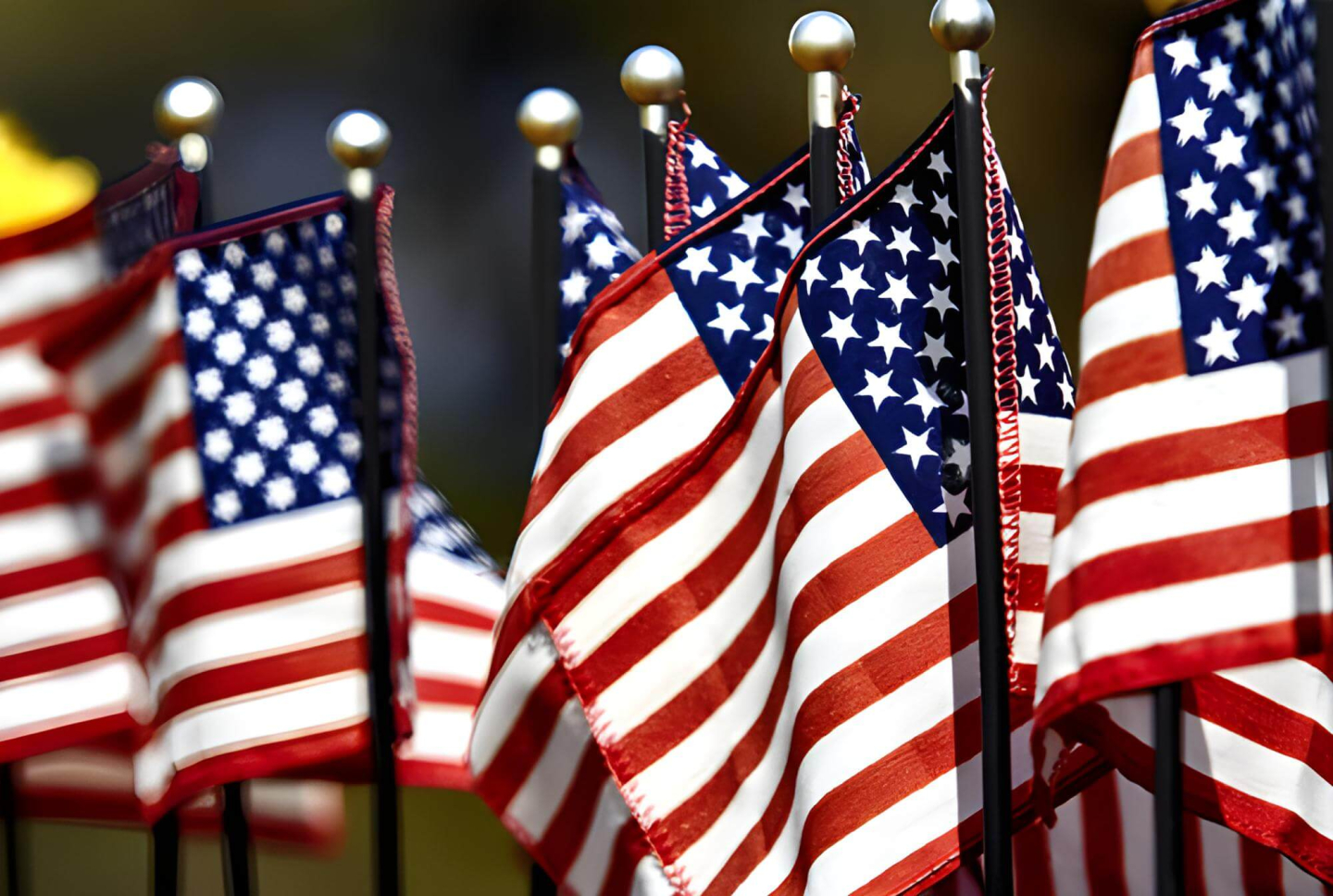US personal spending rose only 0.2%MoM in May, the weakest gain so far this year and following a downwardly revised 0.6% rise in April. Today's reading came below analysts’ estimates of 0.4%. Spending rose for services, namely housing, international travel and hospital services and gasoline while spending on motor vehicles and parts, namely new autos declined. Real or inflation-adjusted personal spending declined by 0.4%, the first drop so far this year, in a sign persistently high consumer prices started to weigh on households affordability and drove recession risks.
The core PCE Price Index inflation, the preferred gauge of inflation by the Fed, fell slightly to 4.7% in May from 4.9% in the prior month, the lowest in six months and slightly below market expectations of 4.8 percent.

PCE inflation slightly below forecasts. Consumer spending is decreasing. Source: BAE

Americans spending rose slower than their incomes for the first time since December. Source: Bloomberg via ZeroHedge
Recent comments from Fed Chair Powell indicate that despite weak economic data US central bank is willing to risk a recession scenario in order to tame surging inflation. Recent readings showed that jobless claims rose to 231k from 229k in the previous week, which may be a sign that the labour market is slowly starting to crumble together with the housing market. PMI indices also fell sharply followed by weak consumer confidence numbers, which may be a sign that the economy will face recession at the end of 2022 rather than in 2023. However, the decline of the core PCE reading coupled with lower spending looks positive, and maintaining this trend could help bring inflation back to lower levels in the longer term.
The “Halloween Effect” and the Five Fears Haunting Financial Markets
ECB Conference: Global Uncertainty, Policy Stability 💶
BREAKING: EIA gas inventories change slightly above expectations. NATGAS increase after EIA data 📌
BREAKING: EBC keeps rates unchanged! ↔️💶


